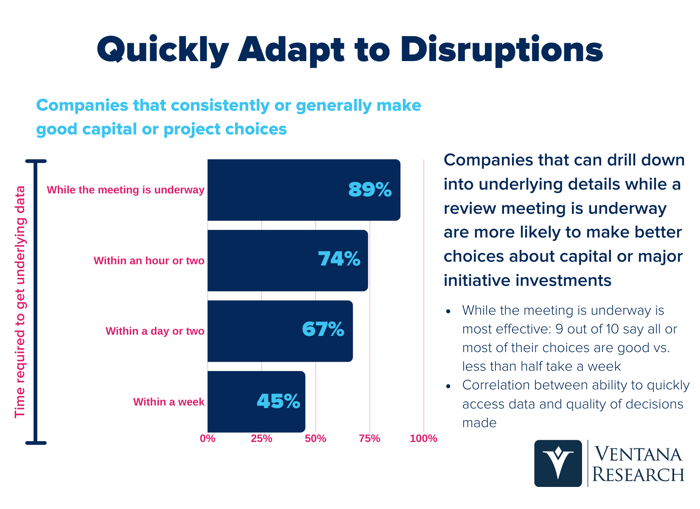In this article

If nothing else, COVID-19 has proven that any business assumptions you made about how 2020 was going to shape up likely can now be thrown out the window.
Beyond your Enterprise Risk Management (ERM) plan or your board-required Risk Audit, which would tell you what risks are out there and the Impact, Likelihood, and Velocity, what we are all quickly realizing is that anticipating a risk and dusting off a specific mitigation or continuity plan is different than having the ability to rapidly re-spin your plans, in the moment, and redeploy resources as new information reveals itself.
Living in the midst of COVID-19 right now, are your planning processes advanced enough to enable you to re-prioritize and re-deploy your resources to meet the disruptors that are heading your way?
If you are still using table-top conversations and manual planning processes to drive your business planning, whether annually, semi-annually, or quarterly, it’s time to question that. What do I mean by manual planning processes? If you are still using spreadsheets, you are living right now through the realization of their limitations in trying to steer business operations through COVID-19.
Ventana Research ran a study that showed that 89% of companies that consistently make good capital or project choices were able to drill down into underlying details while a review meeting is under way, and there is a high correlation between their ability to access data quickly and in the eventual quality of the decisions made. Spreadsheets are antiquated -- static models that don’t provide insights into underlying data or enable rapid exploration and answers to questions.

You may be able to pat yourself on the back and say that you haven’t used spreadsheets in a while – you now have business intelligence tools or dashboards that show you the underlying data and yes, you do have the ability to drill down.
But the challenge still remains – what do you do on the go-forward? How do you in fact make decisions? Are you able to capture the environment in which you are operating, see the assumptions you made about that environment, look now at how those assumptions need to change, and quickly run “what-if” scenarios to give you multiple future potential pathways forward?
The limitation to spreadsheets, BI tools, dashboards, and nearly every other visualization of data is that it is fixed at the visualization stage – they lack heuristics to quickly guide you around potential disruptors and changes. You are left to do this yourself. But realize that in the time it will take you to run out 2 to 3 scenarios manually, you could have used machine processing combined with a prioritization framework to look at literally billions of possible scenarios, steer around disruptors, and adapt quickly to change.
This is not an aspirational dream – it’s available today. Advanced organizations make use of these types of technologies now and operate with planning processes that expect continuous change. They purposefully traverse this change as it is occurring, provide you visibility across the planning landscape, use collaborative strategy combined with prioritization about what assumptions need to change, and then apply advanced algorithms to deploy and re-deploy resources as often as needed – many times within seconds rather than days or weeks.
We call this process “Connect, Explore, Adapt”, and each stage requires you to be using technology.
In this case, “Connect” brings together the data in a Data Studio to provide you visibility across your planning portfolios; “Explore” uses a Strategy Navigator to show you the gaps between your priorities and desired outcomes and where you are likely to land if you continue the current course; and “Adapt” helps you with the use of Bottleneck Analysis to quickly evaluate how the disruptors change your resourcing plan and move the ball so that all of your resources are actively planned for and assigned without creating unforeseen bottlenecks.
We invite you to join us now, in this period of rapid disruption, to see how your planning processes can evolve and mature much more rapidly than you would ever have expected. It is not a heavy lift. If you would like, lean on us now, free of charge, to show you how quickly this new software technology can make leapfrog changes to your planning process. Please join us to see the future.

.png?width=600&height=350&name=Copy%20of%20A%20Letter%20from%20the%20CE%20(1).png)



